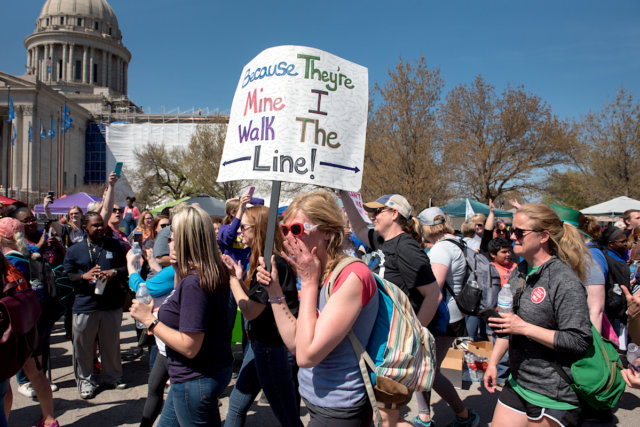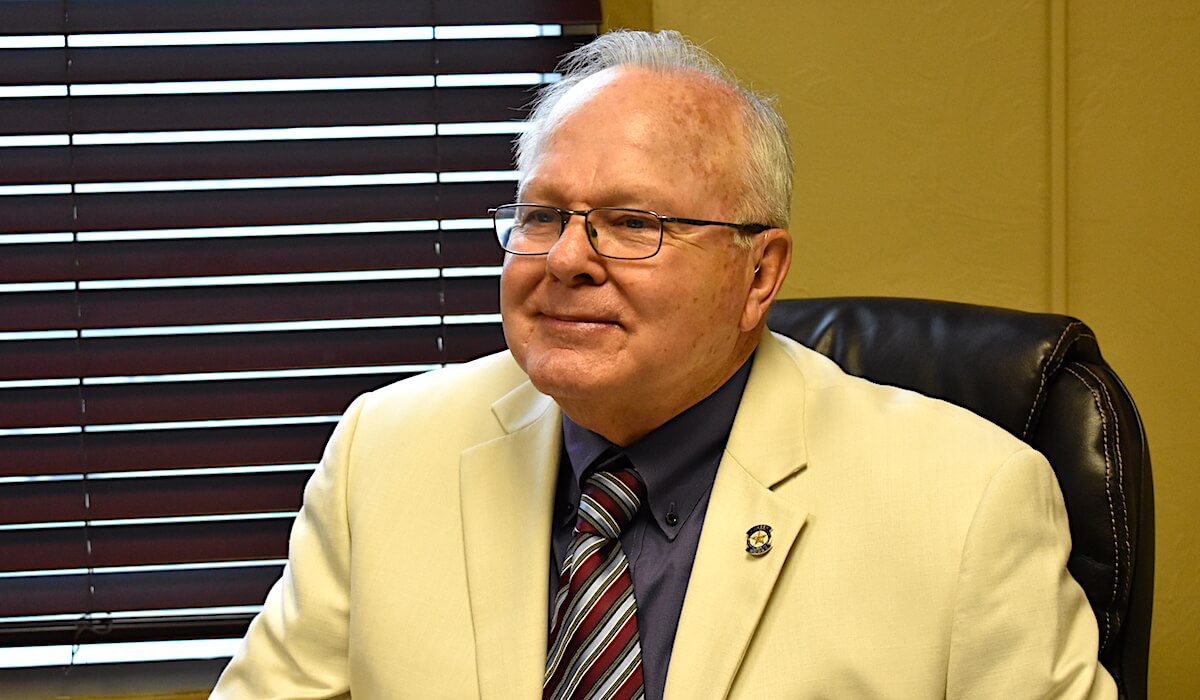

After the Oklahoma Education Association announced Thursday it was terminating its portion of the two-week Oklahoma teacher walkout, some educators, parents and other supporters lashed out on social media, publicly renouncing their association membership and angrily demanding that the walkout continue without the OEA.
The (digital) scene was nasty, replete with name-calling, blame-casting and a steadfast belief that further rallies at the State Capitol — with louder chanting, perhaps? — might do what two weeks of shutdown school districts could not: add more dollars to the state’s next education budget.
“More dollars,” of course, is the operative phrase. Days before the walkout began, House Republicans and House Democrats struck a deal to add about $480 million to the Fiscal Year 2019 education budget, sending an additional $51 million through the state’s funding formula (including $33 million for textbooks) and financing teacher raises ranging from $5,000 for a new teacher to $8,395 for an educator with 25 years of experience and a doctorate. The Oklahoma Education Association did not initially support the funding package, frustrating lawmakers who believed a bird in the hand was better than two in the bush, especially when the feathered creature featured a larger teacher pay package than past efforts the OEA had endorsed.
In the OEA’s defense, many of its members — and many teachers represented by other (or no) education organizations — said the 16 percent pay raises would not be enough, a position that baffled some onlookers, especially considering how the recent West Virginia teachers’ strike yielded only a 5 percent raise for Mountain State educators. Ahead of signing the slew of bills to increase Oklahoma education funding — and give other public employees a raise — Gov. Mary Fallin said she hoped teachers would hold merely a one-day rally to “thank” lawmakers who voted for the funding package.
But as the walkout began April 2, Fallin’s words — including a bizarre metaphor about teenagers wanting better cars — mostly frustrated educators. Meanwhile, other dubious narratives took hold: that the Legislature had not fully funded the raises; that lawmakers were considering even further funding; that passage of a gambling expansion package (colloquially called “ball and dice“) would add additional education funding.
At the end of two weeks, however, the pressure of federal testing deadlines had combined with confusing group messaging and an insistence of finality from Oklahoma State Senate leaders to cause OEA leadership to declare victory and exit stage right, shifting its efforts toward June and November elections.
Complicating factors in the OklaEdWalkout
Today, most teachers will be back in classrooms. But some teachers — and parents — are expected to return to the Capitol in delegations, having worked Friday and over the weekend to seek a unified message about further education funding requests.
While a muddled message is one thing people have pointed to as a problem with this month’s #OklaEdWalkout, it was far from the only complicating factor. Other issues included:
- Timing — The OEA initially announced the walkout for April 23, a date that would have been after the state’s annual standardized testing. By April 27, tests must be administered at 95 percent participation thresholds statewide, at the district level, within individual schools and within specific student assessment categories. Failure to achieve the 95 percent marks could jeopardize hundreds of millions of federal education dollars for Oklahoma. The April 23 date had originally been suggested to avert such risk, but the April 2 date put more immediate pressure on lawmakers.
- OEA elections — As lawmakers were voting on the teacher-raise revenue package that they ultimately passed, the OEA was in the middle of its internal elections. Division among members about the walkout date and whether to support the $450 million revenue package placed OEA leadership in a no-win situation: Either angering some constituents by agreeing to a smaller deal than it had requested or losing the support of legislators who felt they were risking re-election by voting for large tax increases anyway.
- Misinformation — Throughout the walkout, a number of educators told media, lawmakers and their peers that they were not aware teacher pay raises had already been solidified for next school year. Some expressed surprise and quickly transitioned their focus toward a general call for additional classroom dollars. Yet even in the final days of OEA’s walkout involvement, advocates who criticized legislators for doing nothing but cutting education funding for a decade ultimately exasperated senators and representatives — particularly those in the freshman class who had voted time and again for education revenue packages. Add in the number of advocates who pushed for “ball and dice” gambling expansion while simultaneously admitting they did not understand the underlying issues, and legislators had limited motivation to push their leadership to take further action.
- Other budgetary needs — As lawmakers attempt to pivot this week away from the already-passed education budget, many are worried about other state funding needs, particularly in the realm of health care. The Oklahoma Department of Mental Health and Substance Abuse Services is seeking $28 million to restore past cuts, and the Oklahoma Health Care Authority is attempting to draw down additional federal dollars by simply maintaining its previous-year funding.
Beyond the OklaEdWalkout: Focus on elections
Considering the complexities of shutting down schools — while attempting to retain federal education dollars — education advocates should be proud of their strong showing during this month’s walkout.
RELATED
Ample challengers for those who voted ‘No’ on revenue by Garrett Davis
But with political realities being political realities, they would do well to remember the long-game of their efforts. Oklahoma’s education budget did not shrink overnight, and its restoration will take time as well. The funding and teacher-raise package already passed by the Legislature is undeniably a step in the right direction, and the ambitious OEA request itself even specified that additional pay raises would occur in the ensuing fiscal years.
As a result, educators this week will simply have to prove what they argued during their two-week work stoppage: Oklahoma’s children are the top priority. To that end, children and families are better off with their teachers in the classroom, fostering a positive learning environment and even teaching the power of civic engagement in the aftermath of a tumultuous two weeks.
Furthermore, educators must remain fired up for the roughly 10 weeks remaining ahead of June 26’s primary election. If the 2019 Legislature ends up comprised of even more people who truly support public education funding, teachers, children and schools should be in a position to add to this year’s legislative victory.
Instead of arguing among themselves about what did not go right, education advocates can improve their chances for future success by working to elect allies and support education funding in June and November.
Not least among their needs will be a strong opposition to the likely anti-tax referendum veto effort that could undo the positive steps already taken.





















